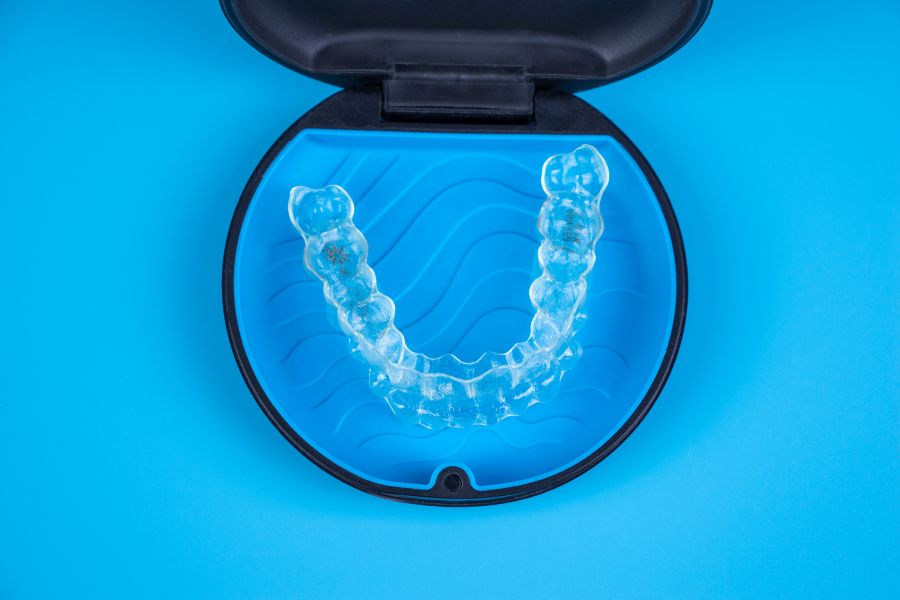Invisalign has taken the orthodontic world by storm, offering a discreet and comfortable alternative to traditional metal braces with its clear aligner range. In this comprehensive review, we’ll dive deep into the world of Invisalign, discussing its benefits, drawbacks, and how it compares to other clear aligner providers.
Invisalign is a versatile solution for teeth straightening, designed to address a range of orthodontic problems. These include:
 Keep in mind that Invisalign may not be suitable for all cases, so it’s crucial to consult with an Invisalign-trained orthodontist or dentist to determine if it’s the right choice for you.
Keep in mind that Invisalign may not be suitable for all cases, so it’s crucial to consult with an Invisalign-trained orthodontist or dentist to determine if it’s the right choice for you.
Like any orthodontic treatment, Invisalign comes with its advantages and disadvantages. Here, we’ll break down the pros and cons to help you make an informed decision.
Invisalign offers a range of clear aligner products and services to cater to the needs of different individuals. Here is a breakdown of their offerings:
Invisalign Full:
Invisalign Teen:
Invisalign First:
Invisalign Lite:
Invisalign’s treatment process involves several steps, ensuring a personalized approach to achieving your desired smile.
The Invisalign Process
For more information on the Invisalign process, visit here.
Invisalign is an excellent option for both teens and adults with mild to moderate orthodontic issues. However, severe cases or those requiring complex tooth movement may not be the best fit for Invisalign treatment. A consultation with a certified Invisalign provider will help determine if you’re a good candidate. Invisalign might treat mild non-extraction cases, but it requires more time than fixed appliance treatment for more complex cases. Source: Clinical effectiveness of Invisalign® orthodontic treatment: a systematic review – PMC
Invisalign’s cost varies depending on factors like treatment complexity, geographical location, and provider fees. The average price ranges from $3,000 to $8,000. Insurance coverage, flexible spending accounts, and payment plans may help with affordability.
Invisalign vs. AlignerCo
AlignerCo is an affordable alternative to Invisalign, offering a direct-to-consumer model with remote dental monitoring. The treatment costs are significantly lower than Invisalign. Invisalign’s in-office consultations and supervision provide a more personalized approach to treatment, which could be important for patients seeking a higher level of care. AlignerCo’s website.
Invisalign vs. SmileDirectClub
SmileDirectClub, like AlignerCo, offers a direct-to-consumer model with remote dental monitoring. The treatment costs are lower than Invisalign, but the lack of in-person dental supervision may not be suitable for everyone. Invisalign’s in-office consultations and supervision provide a more personalized approach to treatment, which could be important for patients seeking a higher level of care.
Invisalign vs. Byte
Byte is another direct-to-consumer clear aligner provider that offers remote dental monitoring. What sets Byte apart is their proprietary HyperByte technology, which claims to accelerate treatment time. However, like other direct-to-consumer models, the absence of in-person dental supervision may not be suitable for everyone, especially those with complex orthodontic issues. Invisalign’s in-office consultations and supervision provide a more personalized approach to treatment, which could be important for patients seeking a higher level of care.
Invisalign vs. Candid
Invisalign vs. ClearCorrect
ClearCorrect is a direct competitor to Invisalign, offering similar treatment outcomes using clear aligners. The treatment costs for ClearCorrect are generally lower than Invisalign, making it an appealing option for those looking for a more affordable alternative. Both Invisalign and ClearCorrect provide in-office consultations and supervision, ensuring personalized care throughout the treatment process. However, Invisalign’s proprietary SmartTrack material and extensive experience in the orthodontic field may be important factors for patients seeking the best possible outcome.
Invisalign has proven itself as a popular and effective orthodontic treatment, providing patients with a discreet and comfortable way to straighten their teeth. However, it’s essential to explore all your options and consider factors like treatment method, cost, and insurance coverage before making a decision.
Whether you choose Invisalign or one of the other clear aligner providers, it’s crucial to consult with a certified orthodontist or dentist to ensure the best possible outcome for your unique needs. With proper research and professional guidance, you’ll be well on your way to achieving the smile you’ve always wanted.

